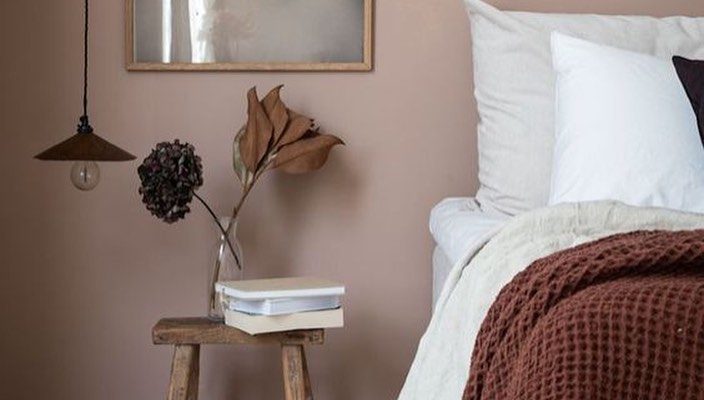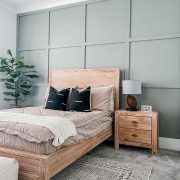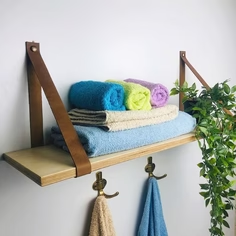When designing a bedroom, color is an important aspect. Every color can give a different effect according to what nuance you want to get. Thus, choosing the right color for your bedroom might be the first consideration before determining the next decoration. Well, related to that, there are bedroom color ideas that you can choose from. And one of them is natural color.
The natural color bedroom is becoming a popular trend because it feels calm, relaxing, and clean. This trend works for many different styles of bedrooms and can be easily applied to any color palette. The colors used can be warm or cool, depending on your taste and preference. It can also include shades of green, brown, or blue. Some people may even use a combination of different shades to create a unique look. The key to adding any color to a neutral bedroom is to keep the rest of the room minimal and streamlined. This allows the eye to focus on the accent pieces and details, and it helps to keep the overall look clean and uncluttered.
Kinds of Natural Color Ideas
Nature can inspire a wide variety of colors for your designs, with endless possibilities ranging from the vivid greens and deep browns of forest scenes to the softer oranges, yellows, and pinks of blooming spring flowers. A natural color palette can also incorporate the deeper blues and rich purples found in a mountain range or open sky, or even the grays and neutral tans of sandy beaches or stormy ocean waters.
Warm natural tones such as earthy browns, creamy ivories, rich terracottas, and golden ochres bring coziness to any space. Use them to create a sense of warmth and intimacy. If you want to add a moody element to your natural color palette, consider the colors of twilight and dusk. The deep purple-gray tones of the sky at twilight can be accented with dark greens or rich navy blues for a deep, earthy feel.
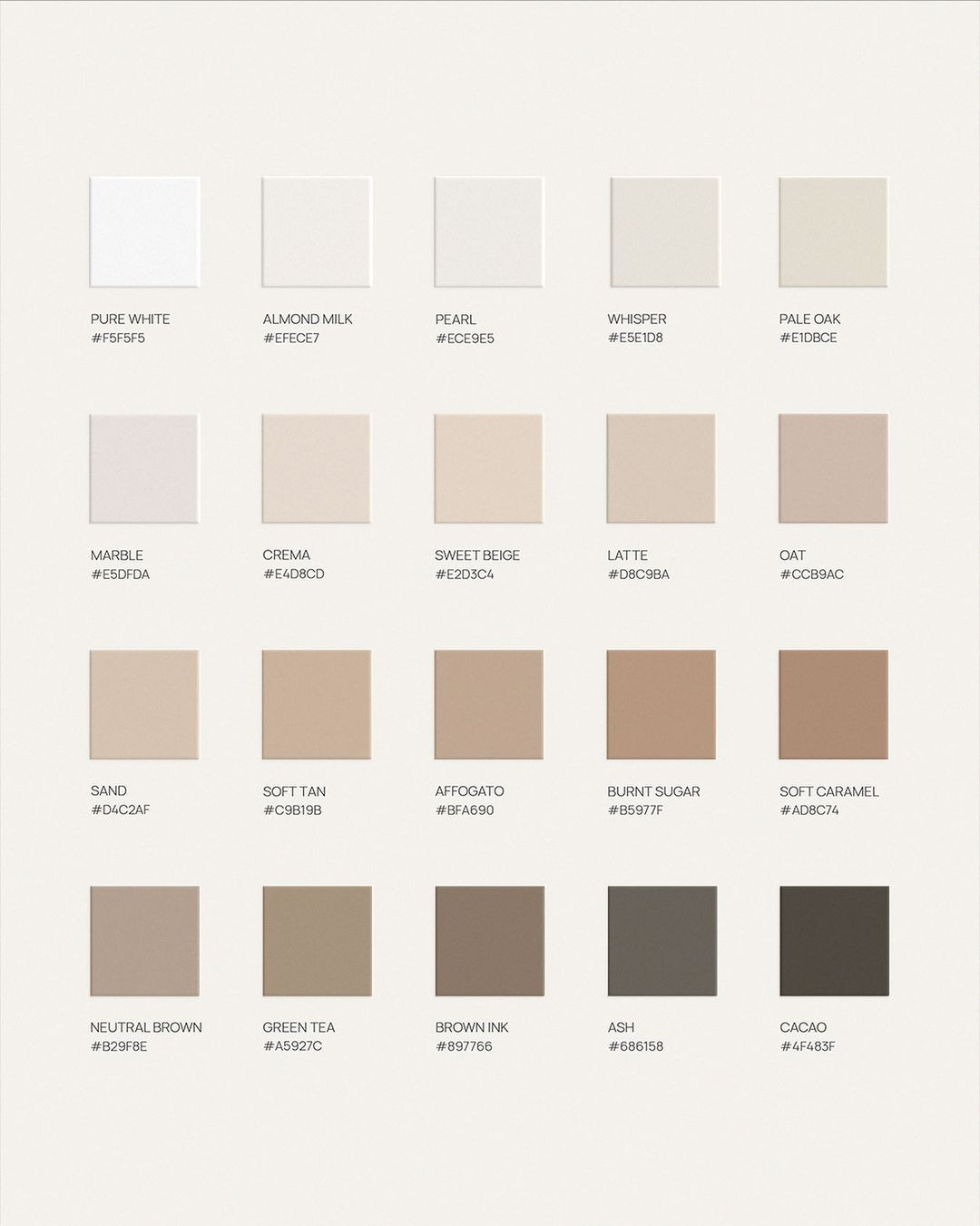
These are some of the natural colors that are suitable for any decorating ideas in your home. White color will give a lighter feel and is easy to combine with anything. Meanwhile, beige and ivory colors can bring warm and soothing nuances to your home. Not only that, there are still many natural colors that you can use for your home decoration ideas, and have their own advantages. Natural Color Palette from @polafijalkocreative
White
White bedrooms are a classic choice because they’re light and airy. As a basic color that goes with everything, white is the perfect base for your bedroom color scheme. The right shade of white can bring warmth and brightness to your space. White can also make a room feel larger, especially for a small bedroom, and be a blank canvas for your bedroom decor preferences.
This classic neutral is often chosen because it can be paired with almost any type of furniture. Use a mix of natural materials and textures to create your own look, whether you prefer boho or classic. This simple palette also works well with a variety of different floral patterns, which are popular in many of our current bedding collections.
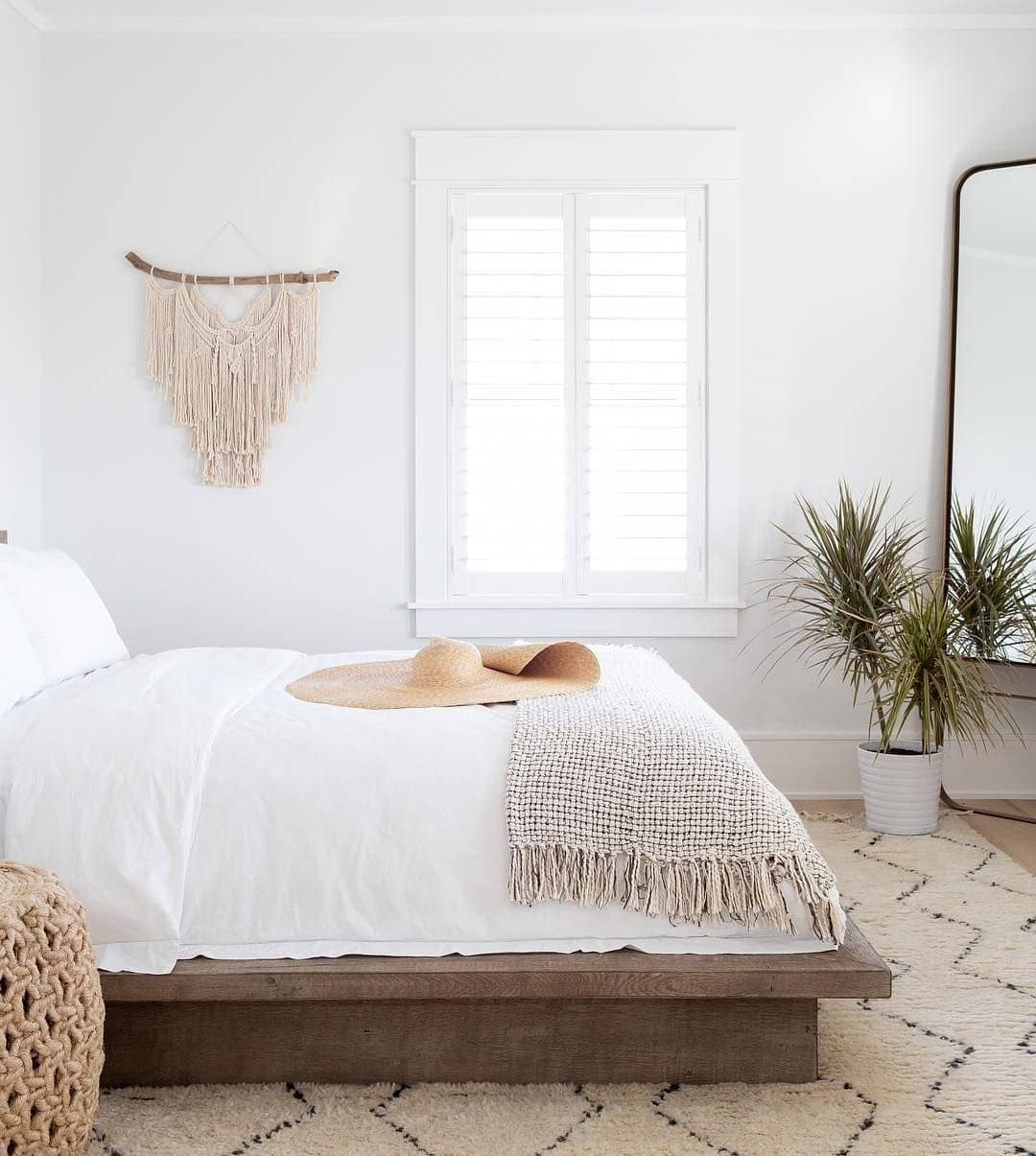
This bedroom uses a neutral color, namely white on the walls so that it will be a background that is easy to combine with anything. The patterned carpet on the floor and also the macramé hanging on the wall will give a beautiful boho touch and make your white bedroom more lively. Meanwhile, a house plant that is displayed in the corner of the room will provide freshness. White Natural Bedroom from @drifttradingco
Brown
Brown is a popular natural color option for the bedroom because of its inherent earthiness and the sense of relaxation and calming vibes it offers. Its warm undertones offer a cozy feel to the room and can be balanced with cool colors like green to add dimension and a more neutral tone. Lighter shades of brown provide a neutral backdrop that can be enhanced with any style of decor. While darker shades of brown can be used to produce a moody or dramatic ambiance in the bedroom. Depending on the shade of brown you choose and its undertones, adding a touch of bright color to the room can create a trendy and contemporary look or a vintage and rustic ambiance.
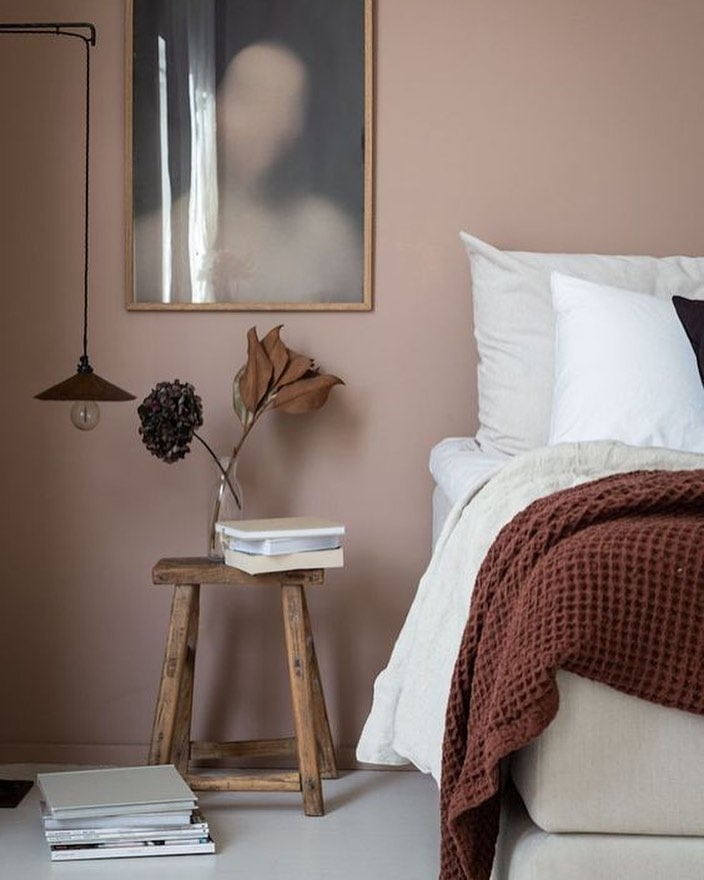
The light brown color on this wall will present a calming feel with a simple look in your bedroom. A touch of white on the bedding and pillows will give a brighter and more natural look. Meanwhile, blankets with a brown theme will present a real moody look in a bedroom with a natural theme. Brown Bedroom from @amastudiointeriors
Blue
Blue is a great color for spring because it evokes the freshness of new beginnings. So, it’s suitable to make a bedroom more alive. It’s a soothing color that can be balanced with more neutral tones such as grey and beiges, which can be applied to the textured throw pillows and wooden bed frames in this space. It can also be paired with boldly patterned floral prints, as is the case with this room, which features a coordinating duvet cover with a fun botanical motif.
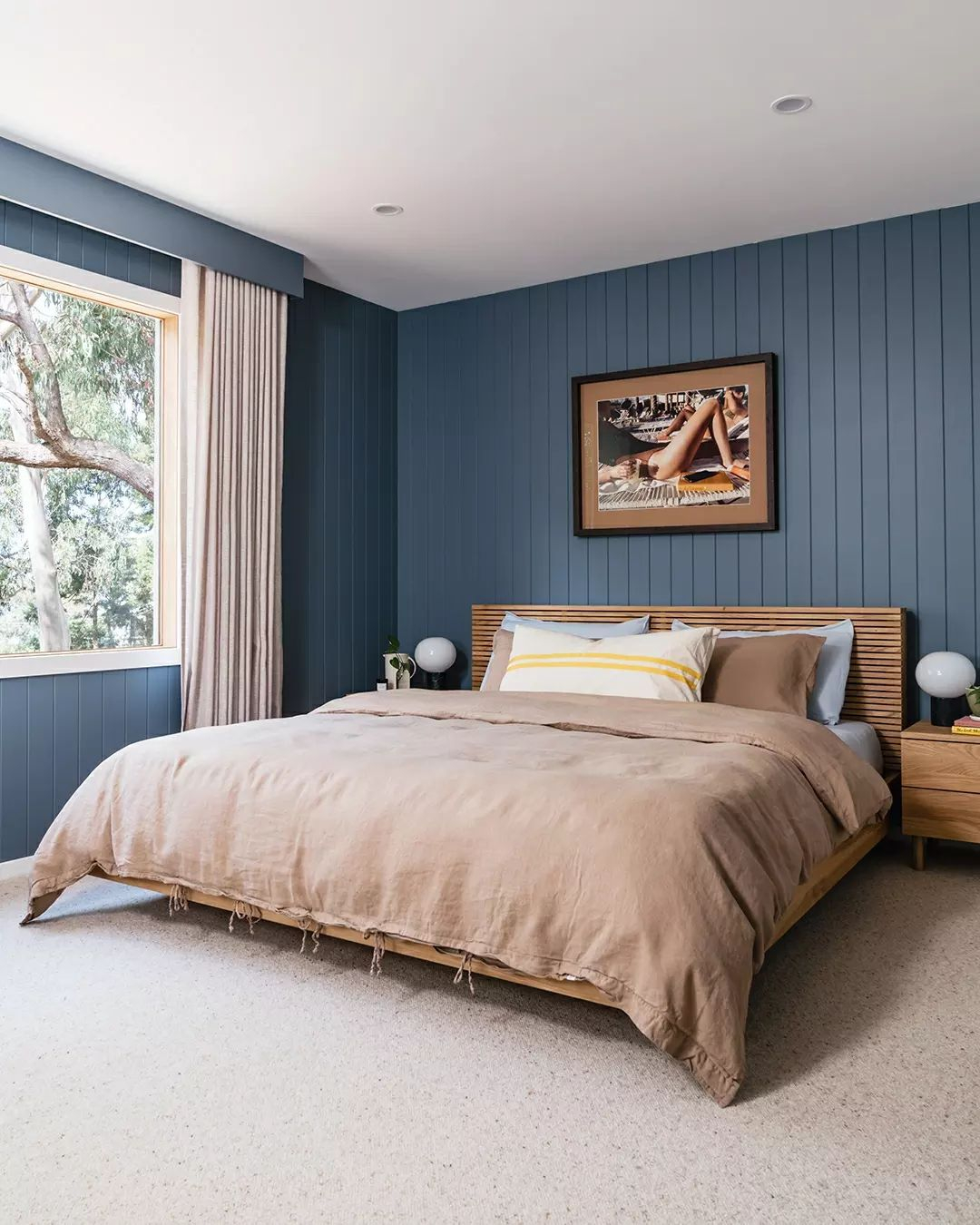
This time you can use blue walls for your spring bedroom decoration. Blue walls will present a fairly bright feel but still with a natural theme. Paired with wooden furniture and beige bedding will make it look perfect and more attractive without going overboard. Blue Bedroom from @huntingforgeorge
Green
Green is another natural bedroom color that can work for any style. From light sage to rich olive, this hue can make any sleeping area feel refreshed and full of life. It can be a neutral backdrop for vibrantly patterned bedding or it can serve as a bright pop of color that stands out against dark walls and contrasting furniture.
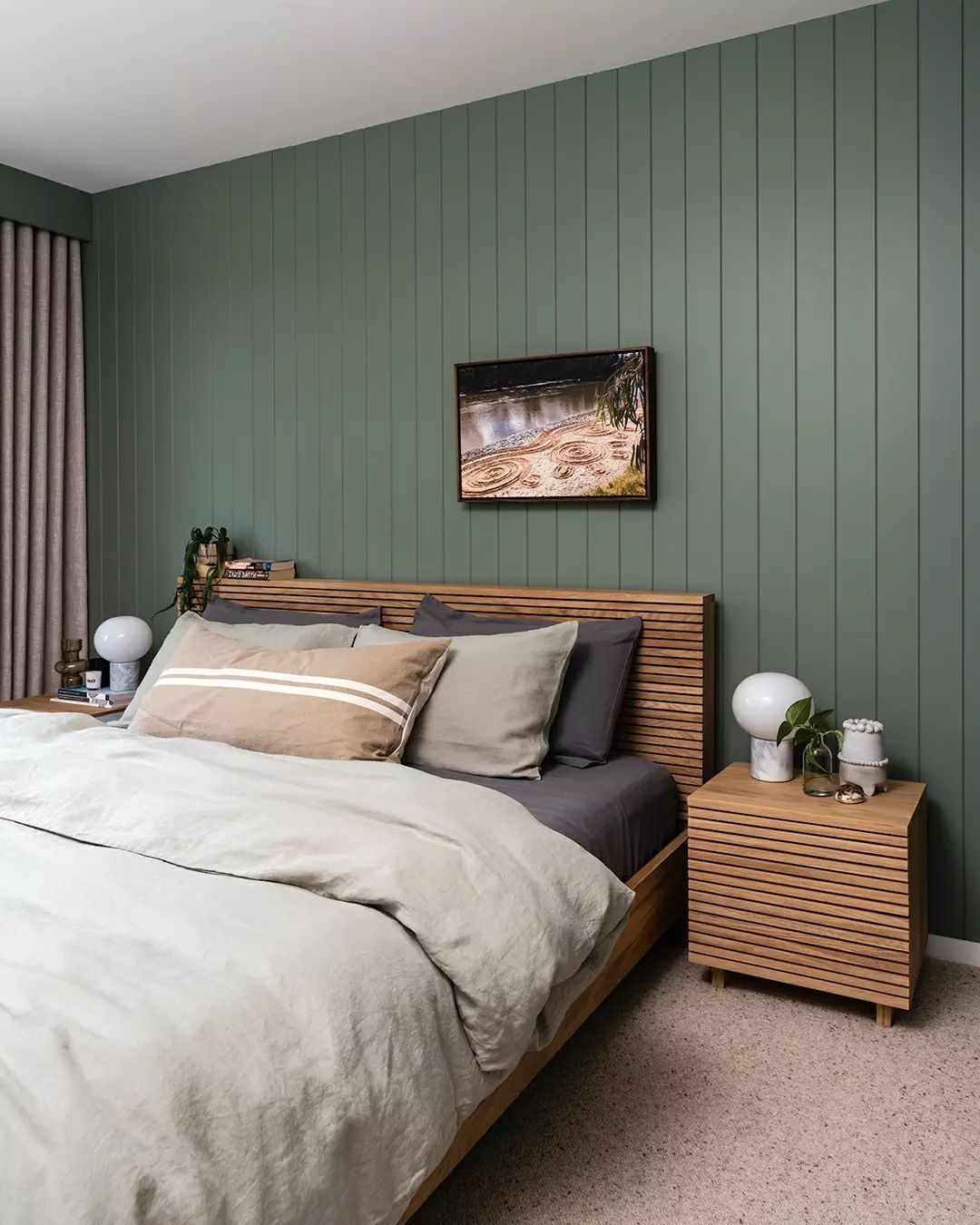
Shiplap walls in green will bring a beautiful and quite refreshing look to your bedroom. Combined with wood-colored furniture, it provides a subtle contrast and looks beautiful. A touch of light gray on the bedding and pillows will add perfection to this bedroom decor. Green Bedroom from @huntingforgeorge
Grey
Grey is the perfect choice for a natural color bedroom idea because it can be adapted to suit any style of room. You can use light shades to create a calming haven or dark shades for a contemporary retreat. It is also easy to accessorize your grey bedroom ideas and add pops of color with a range of soft furnishings. Other colors that complement grey well include silver, gold, and deep green leafy houseplants.
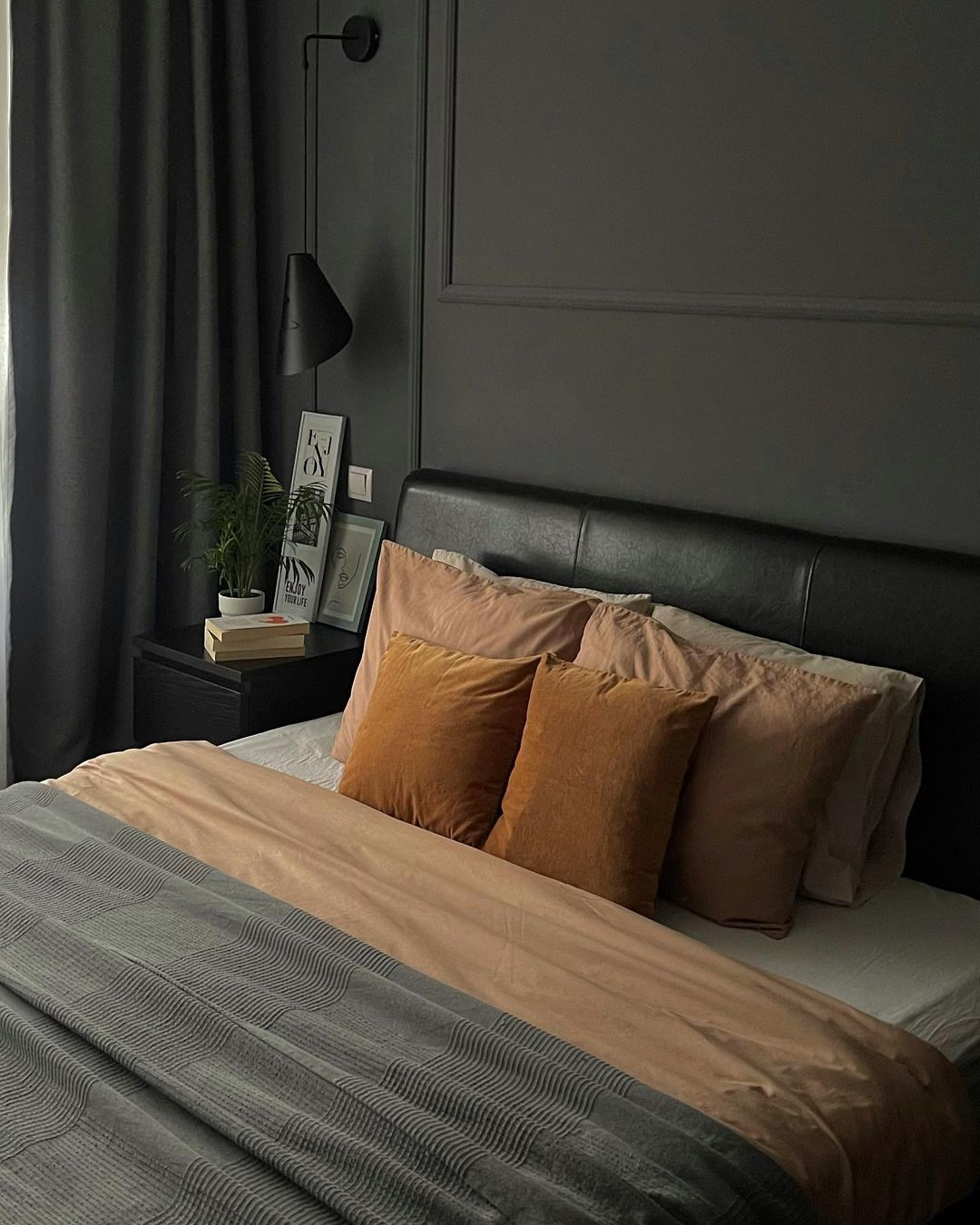
If you like a natural look, gray is the perfect color theme for your bedroom. This time you can apply gray to the bedroom walls and combine it with home accessories in the form of gold pillows and bedding. Meanwhile, a small potted house plant that is displayed on the nightstand will present a beautiful and quite refreshing look. Grey Bedroom from @madalina.ciocan
Yellow
As a natural color, yellow is an ideal choice for your bedroom. It invokes warm sunshine and buttercup flowers, a color that’s calming for the eye. It also plays well with many other colors, adding warmth to palettes of blue and grey, or harmonizing bold reds and purples.
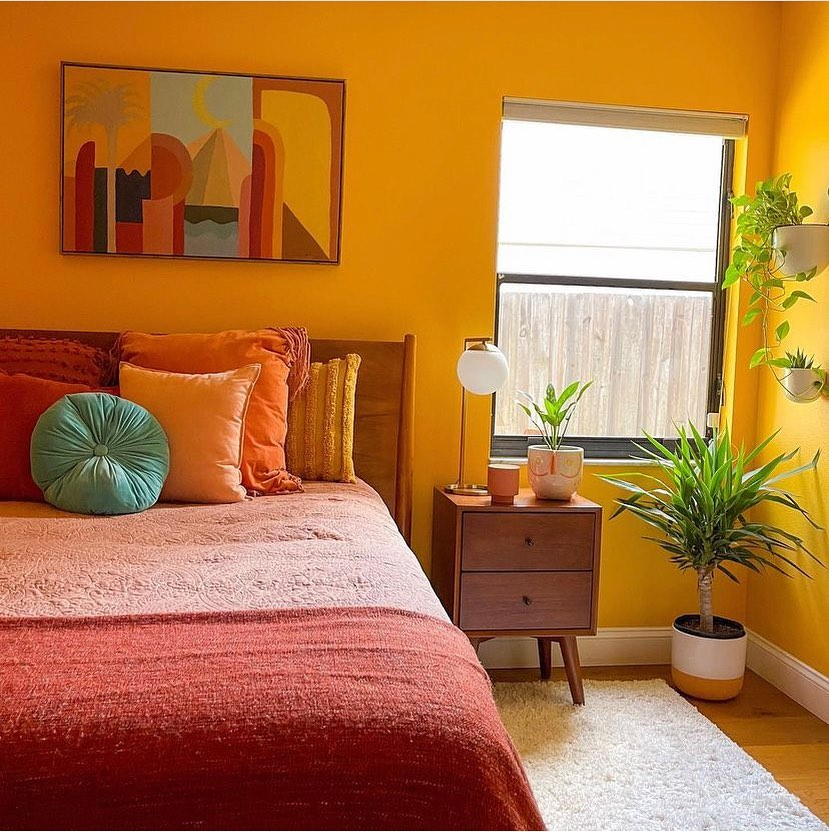
This bedroom with yellow wall paint looks beautiful and amazing. Combined with other color palettes in the form of blue, orange, pink, and others, it will make it look more perfect. Meanwhile, some house plants that are displayed on the floor, walls, and nightstands will make your bedroom more naturally beautiful. Yellow Bedroom from @rainbowhomemonthly
Tan
From beachy sand to rich chocolate brown, tan is a natural color that offers plenty of warm bedroom ideas. Whether your tastes lean more toward a light sandy shade or a darker option with hints of warm yellow or orange undertones, this neutral color is a great way to create a serene environment in your home. Tan can also be used to accentuate the texture of your home’s flooring or ceiling. The tan walls add an extra bit of dimension to the space, making it feel like a private cabana rather than just another bedroom.
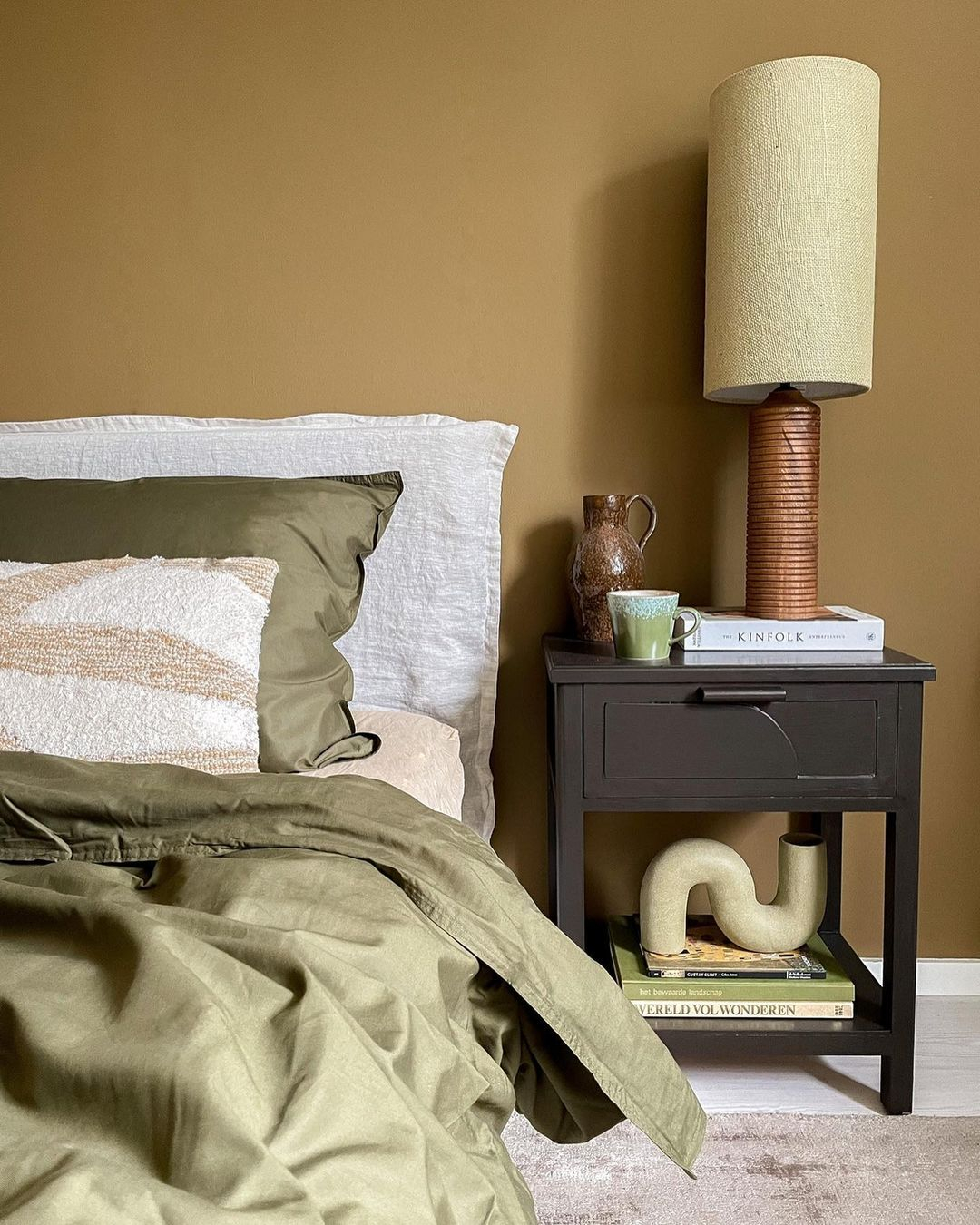
Tan is one of those earthy colors that can never fail your home decor ideas. This time you can apply a tan color to the walls so that it will create a calm and warm feel. Combined with dark green and also white, it will make this bedroom look extraordinary and it is quite comfortable to rest because it has a calming feel. Tan Bedroom Color from @novi_interieur
Terracotta
A color that can be described as a warm natural, terracotta adds a hint of warmth to any bedroom. It can be found in many forms, including ceramic tiles and pottery, and also in the form of terracotta-colored paint shades, blankets, and other textiles. Furthermore, if you want to use a bold color but don’t want to make a big change, try painting just one accent wall in terracotta. That way, you can still use other neutrals for the rest of the room.

Interesting! This bedroom has a neutral theme with a combination of terracotta and white walls. The terracotta wall at the top of the bed will be the perfect background for your bedroom. Then you can complete it with white and gray colored furniture that will make this bedroom look extraordinary with some natural colors. Terracotta Bedroom from @allaboutrenosg\
Creamy Ivory
Creamy ivory is a light shade that packs high style versatility, and it can be used in any environment, including bedrooms. It works well with other neutral shades, but it pairs particularly beautifully with warm tones like red, orange, yellow, and pink. Creamy ivory walls provide a smooth, subtle backdrop that’s ideal for a wide variety of furniture styles. If you’re considering pairing your ivory walls with brown furniture, be sure to stick to warm shades of brown such as sand, cocoa, camel, or tan. Unlike pure white, ivory provides a mellow contrast that won’t make your brown furniture seem too bright or unnatural. Ivory also looks good with blues, but it’s best to use softer blues rather than icy tones like royal blue or navy.
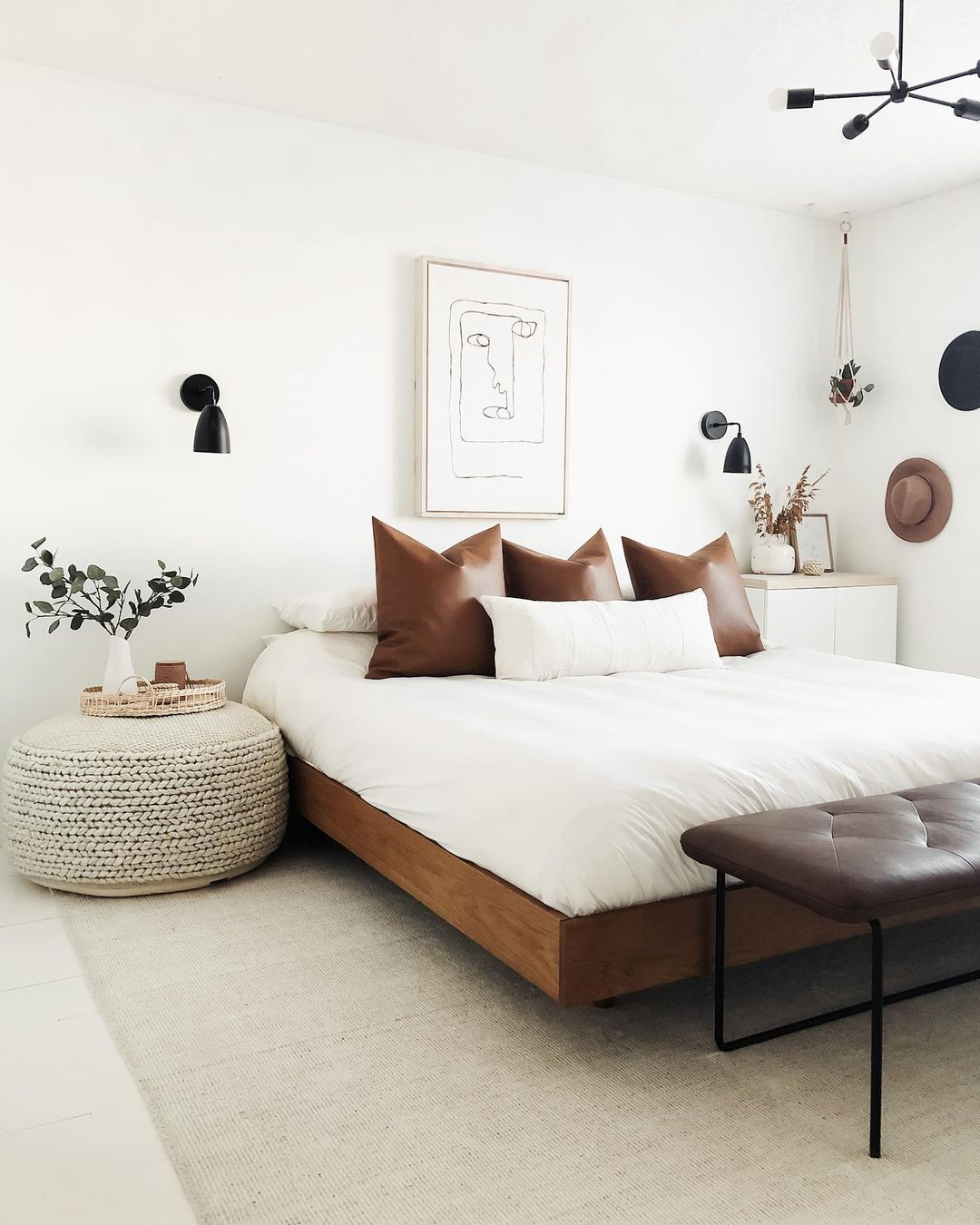
Look at this one bedroom! Having an ivory color wall will be a neutral background with a fairly bright appearance but not overly white. Then combined with a brown bedframe and pillow that will keep it warm even though it has a fairly bright color theme. Meanwhile, vase arrangements and other ornaments will add charm to the beauty of your natural bedroom and succeed in stealing attention. Ivory Bedroom from @frankieandgrae


